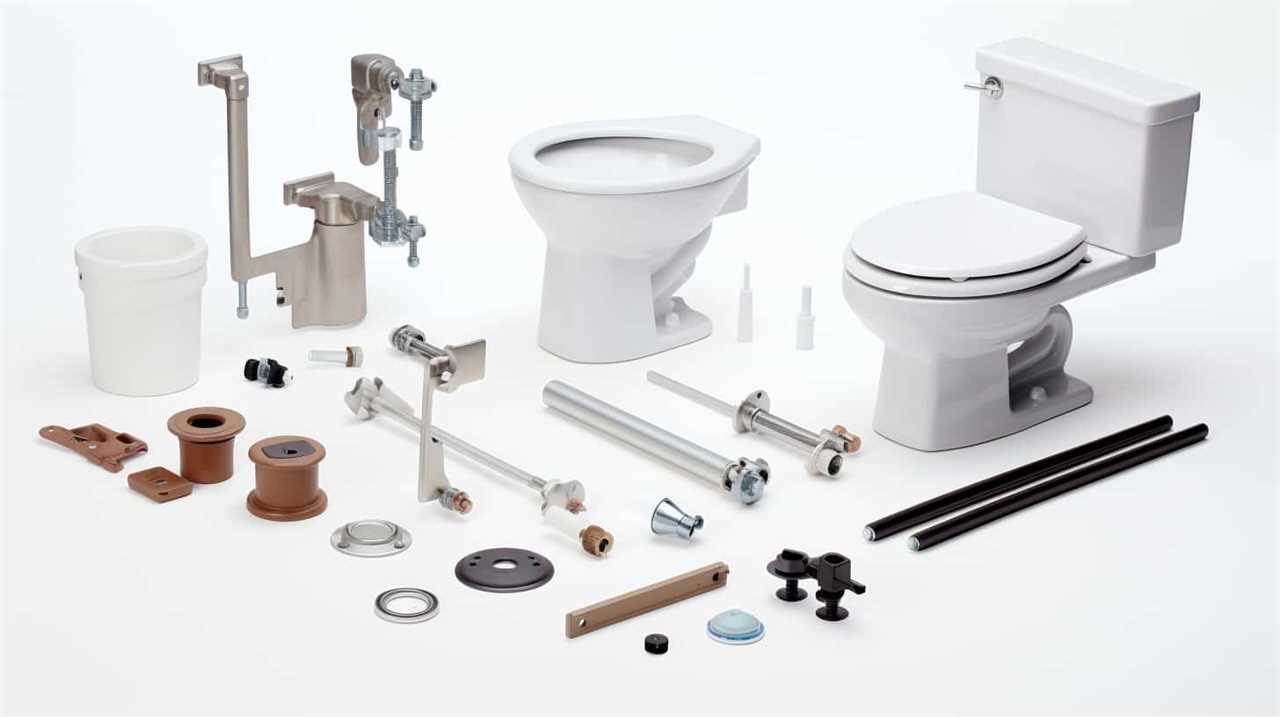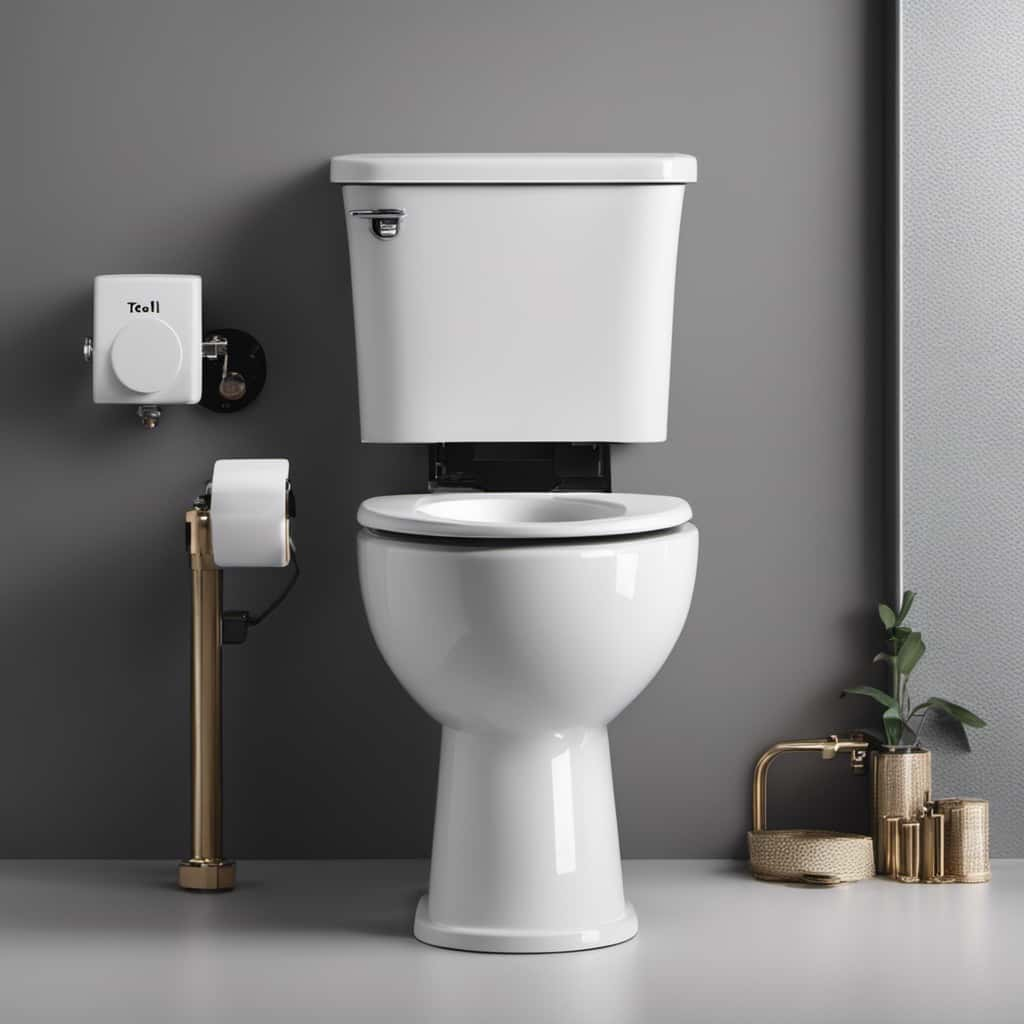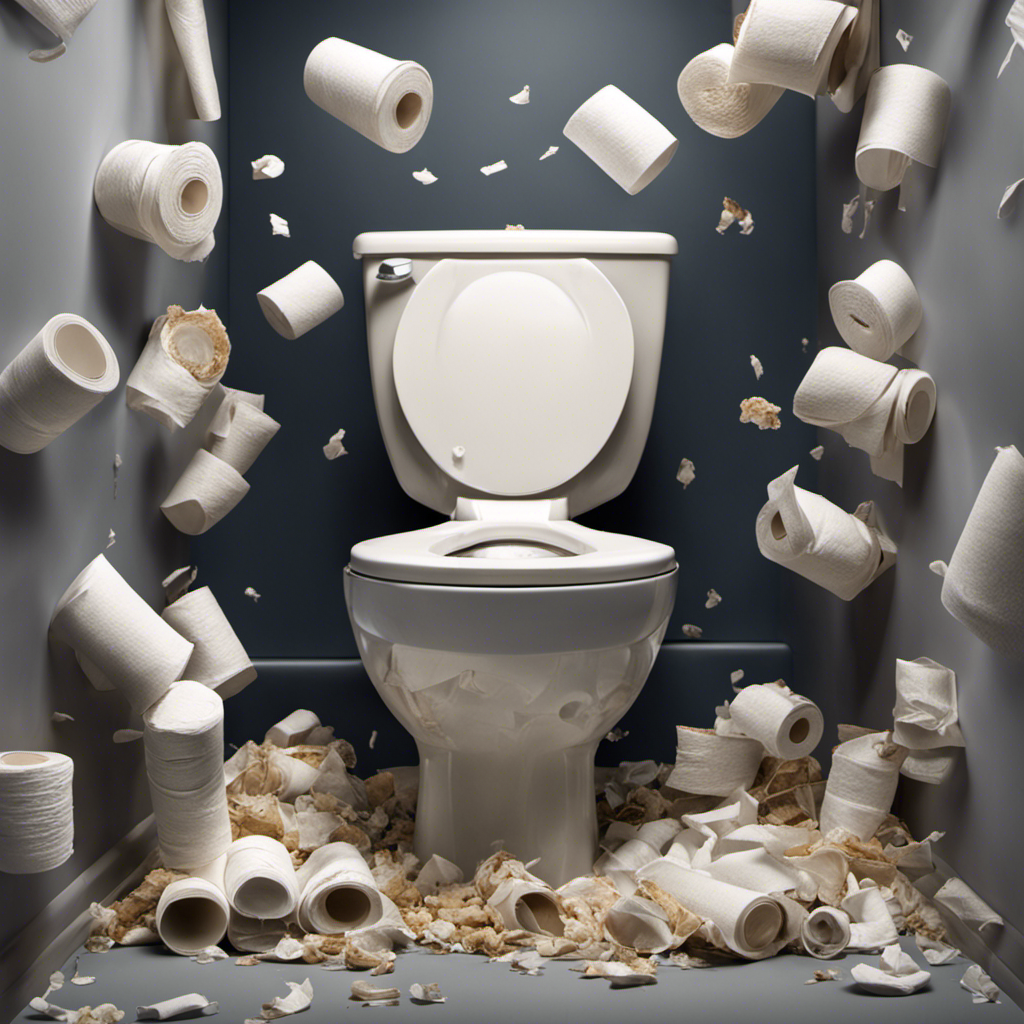Have you ever pondered about the mechanics behind a toilet flush system?
Well, dear reader, allow us to enlighten you.
The inner workings of this marvel of engineering are fascinating.
From the water supply to the flushing mechanism, the flapper valve to the siphon action, and the tank refill system, every component plays a crucial role in the efficient operation of your toilet.
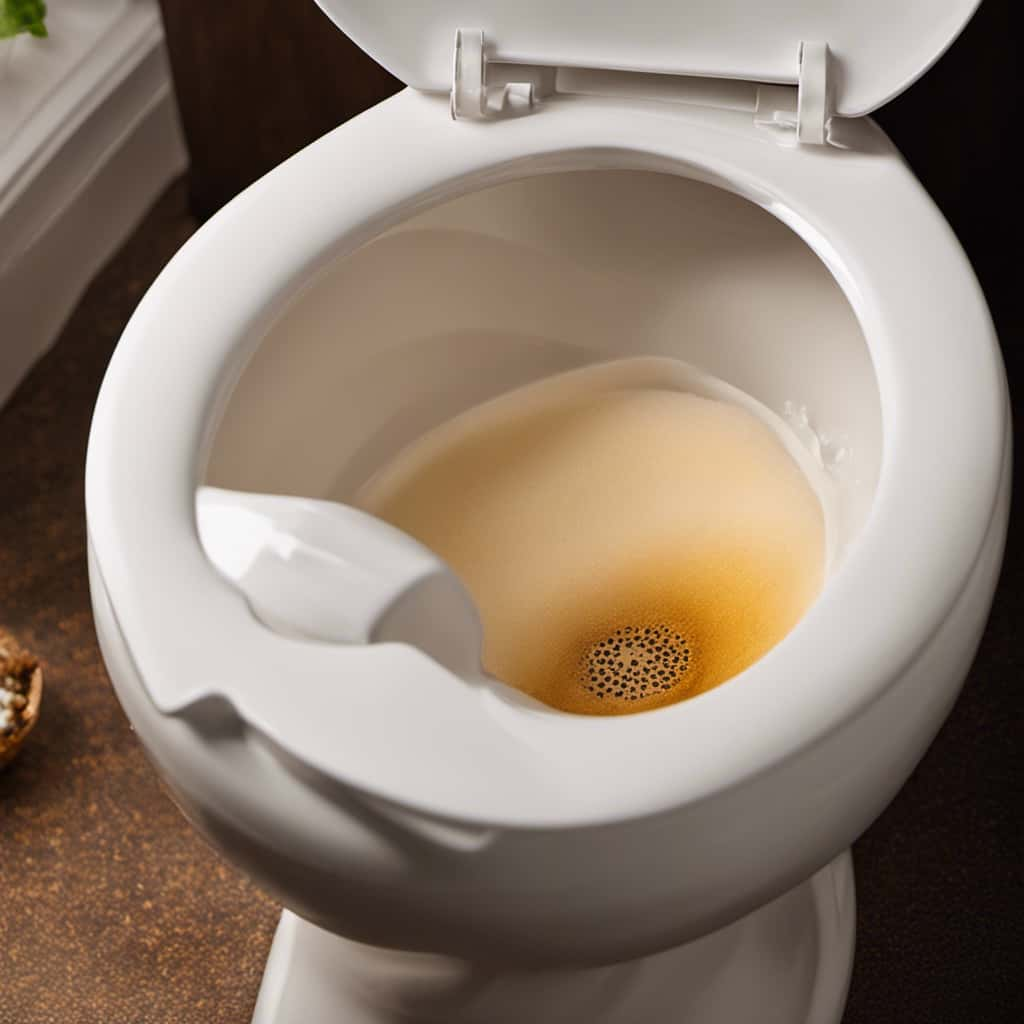
Join us as we delve into the intricate details of the toilet flush system and unravel its mysteries.
Key Takeaways
- Adequate water pressure is crucial for a strong flush.
- The flushing mechanism involves the forceful expulsion of waste from the toilet bowl using a flush valve and a fill valve.
- The flapper valve is a crucial component that controls water flow during a flush and requires regular maintenance for efficient operation.
- The siphon action utilizes gravity flow and air pressure to create a powerful flushing mechanism that ensures efficient and thorough removal of waste.
Water Supply
One of the key components of the toilet flush system is the water supply, which provides the necessary amount of water for flushing. The water supply is connected to the toilet bowl through a pipe, ensuring a constant flow of water when needed.
To maintain an effective flush, the water pressure plays a crucial role. Adequate water pressure is required to create a strong force that pushes waste down the drain and ensures a clean and efficient flush. Insufficient water pressure can lead to incomplete flushing and may require multiple flushes to get the job done. Therefore, it’s essential to maintain proper water pressure in the toilet flush system to ensure optimal performance.
Now that we understand the importance of the water supply and water pressure, let’s move on to discussing the flushing mechanism.

Flushing Mechanism
Now let’s delve into the flushing mechanism, which involves the forceful expulsion of waste from the toilet bowl. The flushing efficiency of a toilet is a crucial factor in its overall performance.
The mechanism consists of a flush valve and a fill valve. When the flush lever is pressed, the flush valve opens, allowing water to rush into the bowl. This sudden surge of water creates a strong force that pushes waste down the drain, ensuring efficient removal.
The fill valve then refills the tank with water, preparing it for the next flush.
While flushing efficiency is important, it’s also essential to consider the environmental impact. Toilets with lower water consumption help conserve water resources and reduce the strain on wastewater treatment systems, making them more environmentally friendly options.

Flapper Valve
The flapper valve is a crucial component of the toilet flush system. It’s responsible for controlling the flow of water from the tank into the bowl during a flush.
When the flush lever is pressed, it lifts the flapper valve, allowing water to rush into the bowl and create a siphon that carries away waste. The flapper valve then closes tightly, preventing any water from leaking into the bowl until the next flush.
Proper maintenance of the flapper valve is essential to ensure the toilet flush system works efficiently. Over time, flapper valves can wear out or become damaged, resulting in leaks and incomplete flushes. If this occurs, it’s important to replace the flapper valve promptly to maintain the toilet’s functionality.
Regular inspection and maintenance of the flapper valve can help prevent issues and extend its lifespan.

Siphon Action
To understand how the toilet flush system works, let’s delve into the siphon action that plays a vital role in carrying away waste. Siphon action is a process that utilizes the principles of gravity flow and air pressure to create a powerful flushing mechanism. When the toilet is flushed, water is released from the tank into the bowl, causing a sudden increase in pressure. This increase in pressure pushes the waste and water mixture over the siphon bend in the toilet trap, creating a siphon effect. As the water flows down the drain, it creates a low pressure area behind it, causing the waste and water to be sucked out of the bowl and into the sewer system. This siphon action ensures efficient and thorough removal of waste, leaving the toilet bowl clean and ready for the next use.
| Component | Role |
|---|---|
| Tank | Stores the water for flushing |
| Flapper valve | Controls the release of water from the tank |
| Siphon bend | Creates the siphon effect to carry away waste |
| Drain pipe | Directs waste and water into the sewer system |
Tank Refill System
We use a float ball mechanism to regulate the water level in the tank.
This mechanism consists of a float ball attached to a lever arm, which is connected to a float valve.
When the tank is empty, the float ball hangs down, causing the float valve to open and allow water to flow into the tank.

As the water level rises, the float ball also rises, causing the float valve to close and stop the flow of water.
This ensures that the tank doesn’t overflow.
The tank refill system is designed to provide enough water for a complete flush while also allowing for bowl cleaning.
Once the flush is initiated, the tank refill system quickly replenishes the tank with water, readying it for the next use.
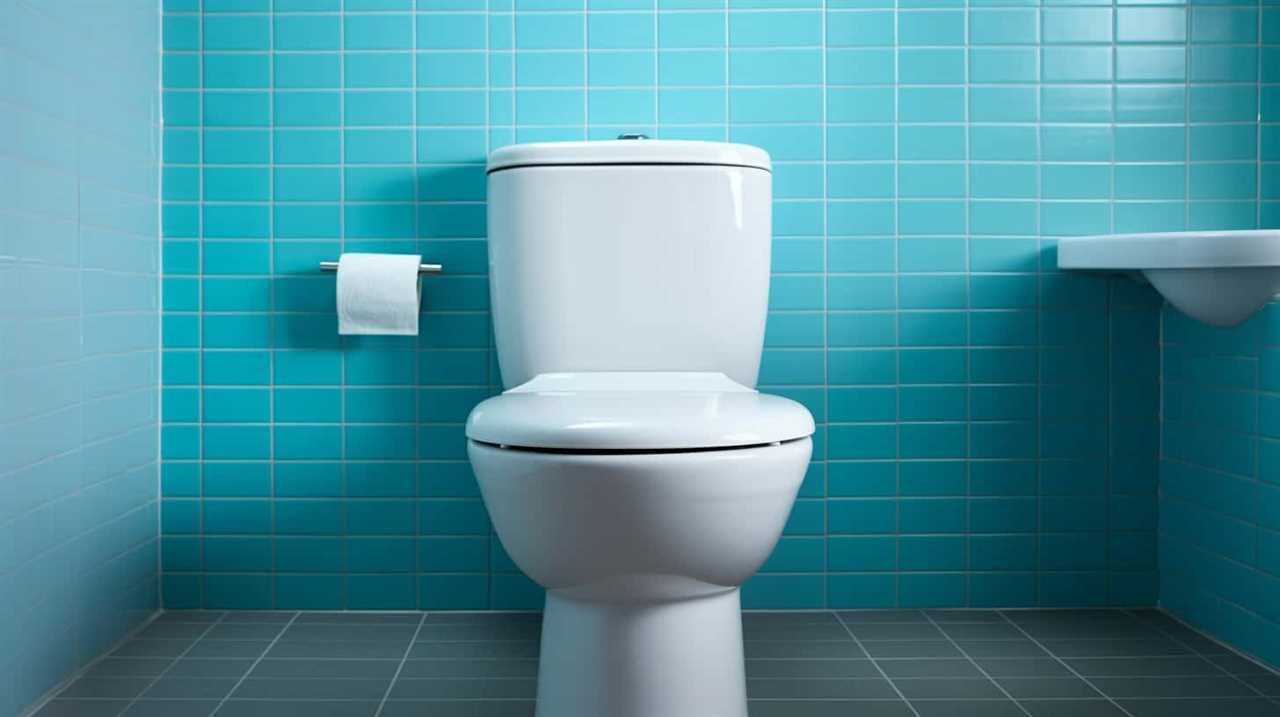
Frequently Asked Questions
How Often Should I Replace the Flapper Valve in My Toilet’s Flushing Mechanism?
We should replace the flapper valve in our toilet’s flushing mechanism when it shows signs of wear and tear. Signs like water leakage or incomplete flushing indicate a faulty flapper valve. To troubleshoot, follow step-by-step guides on how to replace it.
Can I Use a Different Type of Flushing Mechanism in My Toilet if the Original One Breaks?
Yes, you can use alternative flushing mechanisms if your original one breaks. There are different types of toilet flushing systems, each with their own pros and cons. It’s important to consider factors like water efficiency and ease of maintenance when choosing a replacement.
Why Does My Toilet Sometimes Refill Slowly After Flushing?
Sometimes, our toilet may refill slowly after flushing. This can be caused by various factors, such as a clogged water supply, a faulty fill valve, or a partially closed shut-off valve. Troubleshooting and fixing these issues can help improve the toilet flush system.
Is It Possible to Increase the Water Pressure in the Siphon Action of My Toilet to Improve Its Flushing Power?
Can we boost the water pressure in our toilet’s siphon to enhance flushing power? By increasing water pressure, we can improve the force with which water enters the bowl, leading to better flushing performance.
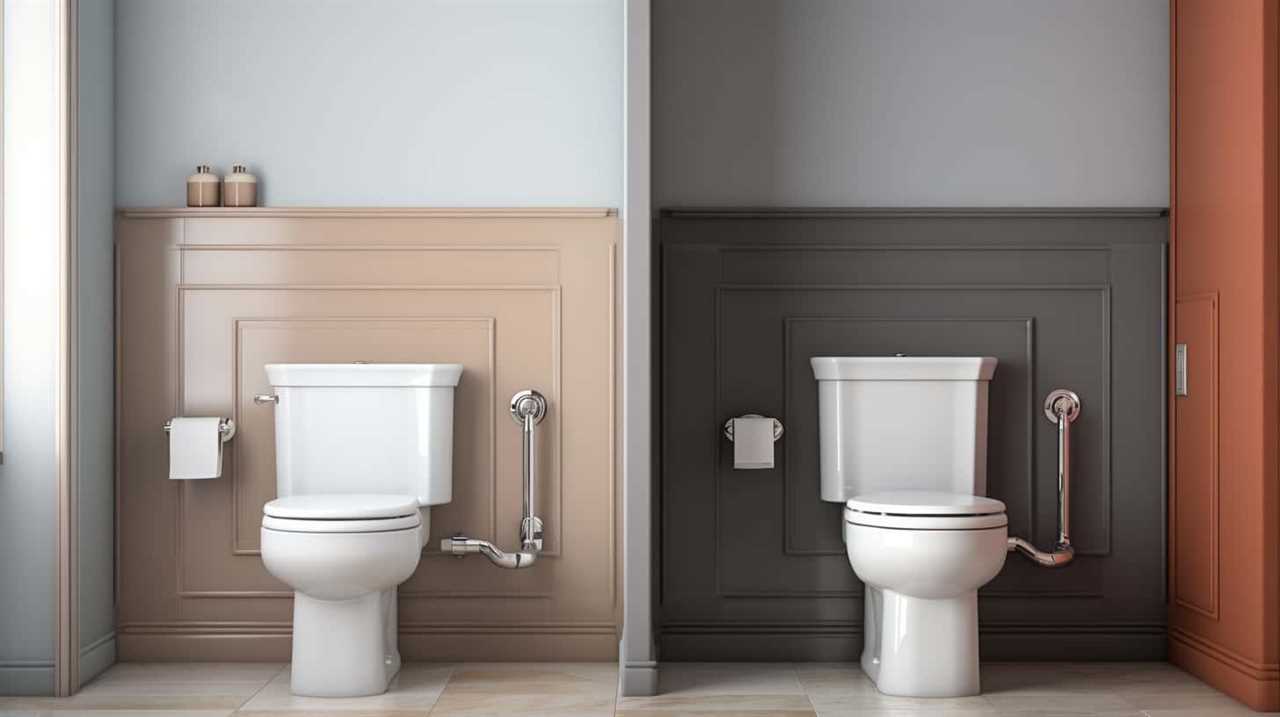
What Are Some Common Signs That Indicate a Problem With the Tank Refill System in My Toilet?
Common signs of a toilet tank refill system problem include slow tank refill, water continuously running, and weak flush. Causes may include a faulty fill valve or flapper. To fix, replace the faulty component.
Conclusion
In conclusion, the toilet flush system operates like a symphony of precision. The water supply acts as the conductor, orchestrating the flushing mechanism, flapper valve, and siphon action to create a harmonious expulsion of waste.
Like a well-tuned instrument, the tank refill system ensures a seamless performance, ready for the next act.
So, next time you flush, remember the intricate dance of components working together, making your toilet a true maestro of cleanliness.
